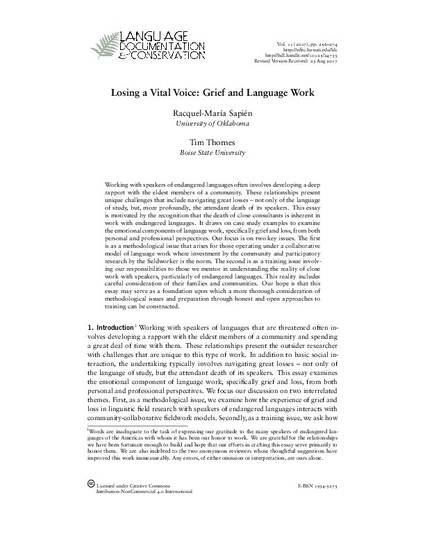
Working with speakers of endangered languages often involves developing a deep rapport with the eldest members of a community. These relationships present unique challenges that include navigating great losses – not only of the language of study, but, more profoundly, the attendant death of its speakers. This essay is motivated by the recognition that the death of close consultants is inherent in work with endangered languages. It draws on case study examples to examine the emotional components of language work, specifically grief and loss, from both personal and professional perspectives. Our focus is on two key issues. The first is as a methodological issue that arises for those operating under a collaborative model of language work where investment by the community and participatory research by the fieldworker is the norm. The second is as a training issue involving our responsibilities to those we mentor in understanding the reality of close work with speakers, particularly of endangered languages. This reality includes careful consideration of their families and communities. Our hope is that this essay may serve as a foundation upon which a more thorough consideration of methodological issues and preparation through honest and open approaches to training can be constructed.
This document was originally published in Language Documentation & Conservation by the University of Hawai'i Press. This work is provided under a Creative Commons Attribution-NonCommercial 4.0 license. Details regarding the use of this work can be found at: http://creativecommons.org/licenses/by-nc/4.0/.
